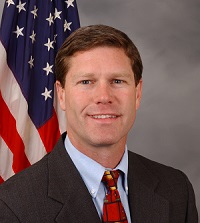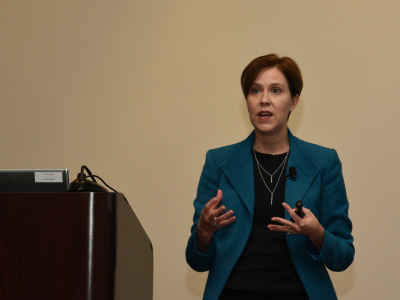China is celebrating the signing of what will be the world’s largest trade pact, which includes 15 countries representing 30% of global GDP, pushing international trade to the forefront as President-elect Joe Biden prepares to take office in January.
Biden said Monday he has already been talking to foreign leaders about trade and stressed that he does not intend to allow China to take the global lead.
“We make up 25% of the world’s trading capacity,” he told reporters. “We need to be aligned with the other democracies … so that we can set the rules of the road instead of having China and others dictate outcomes because they’re the only game in town.”
But China is already celebrating the latest success in widening its global reach. Chinese Premier Li Keqiang on Sunday declared “a victory of multilateralism and free trade” after China signed the Regional Comprehensive Economic Partnership with 14 other countries, which all agreed to slash tariffs on each other’s goods by more than 90% over the coming years.
The China-led deal that cements new ties with Japan, Australia, South Korea, New Zealand, Vietnam, Singapore, Thailand, Laos, Indonesia, the Philippines, Cambodia, Burma, Brunei and Malaysia is widely viewed as a milestone in the Chinese effort to expand its influence throughout Asia.
It’s also a sign that the U.S. needs to reengage on a broader scale in Asia, according to Wendy Cutler, former acting deputy U.S. Trade Representative and current vice president at the Asia Society Policy Institute.
“We need to find a way back into the game or risk not being players,” said Cutler, who played a major role in the crafting of the Trans-Pacific Partnership, the 12-nation trade pact of Pacific Rim countries that the U.S. abandoned in 2017 before it could be initiated.
Hua Chunying, a spokesperson for China’s Foreign Ministry, proclaimed RCEP to be “a reflection of the commitment to free trade and a multilateral trading” and a “booster for high-level economic integration in the region.”

Rep. Ron Kind, D-Wis.
It’s the kind of integration that the Obama administration had hoped to be leading when it spearheaded the effort to bring Pacific Rim countries together under the TPP.
Pro-TPP lawmakers like Rep. Ron Kind, D-Wis., have voiced hopes that the U.S. would rejoin the pact — now redubbed the Comprehensive and Progressive Agreement for Trans-Pacific Partnership, or CPTPP, under a Biden administration.
“The simple fact is that we can’t afford to walk away from the global stage and cede leadership in the fastest growing area of the global economy to China,” Kind said in a statement two months after the U.S. withdrew from the pact.
But even if the U.S. does not rejoin, it still needs to step up its engagement in Asia to counteract China and set new examples for the way the world trades and interacts, says Darci Vetter, vice chair for agriculture and food at Edelman and former chief ag negotiator for the U.S. Trade Representative during the Obama administration.
“I think (RCEP) highlights the need for the U.S. to be really actively engaged in the region, both politically and economically,” she told Agri-Pulse. “I don’t know that (CPTPP) has to be the vehicle, but strong regional engagement is important for our economic competitiveness and it’s important for our foreign policy, given the strength of China’s influence.”
Biden, both on the campaign trail and in debates, said he was open to the U.S. joining the trade pact with Japan, Mexico, Canada, Australia, Vietnam, Brunei, Chile, New Zealand, Peru, Singapore and Malaysia, but stressed that he would want to renegotiate terms. He also continues to stress that U.S. labor unions and environmental organizations would play a strong role.
Interested in more coverage and insights? Receive a free month of Agri-Pulse.
U.S. dairy farmers would be some of the biggest winners from stronger trade ties and lower tariffs in Asian countries like Singapore and Vietnam.
“Southeast Asia is important to U.S. dairy farmers because it provides a growing outlet for their milk,” according to an analysis by the U.S. Dairy Export Council. “Today, the milk from 1 out of 7 tankers leaving American farms ends up in products and ingredients sold beyond our borders. About one day’s worth of monthly production of U.S. milk currently goes to Southeast Asia.”
While RCEP is strong on cutting tariffs and regulating domestic subsidies, and includes chapters on intellectual property protection, e-trade and economic cooperation, it does not contain new standards on labor and the environment.
RCEP is stronger than many existing regional pacts, “but it’s not TPP and I think at the end of the day, we’d have liked to see more countries heading toward that TPP model, which include things like labor and environment,” says Vetter.

Darci Vetter
Had President Donald Trump not pulled the U.S. out of TPP and if Congress ratified the pact, the hope was that other countries — including China — would have eventually joined, allowing the U.S. to spread its influence on issues like biotechnology acceptance even further.
“The idea was that TPP would start with a really high-quality core and then act like a magnet,” Vetter said. “We would work with the countries around it and … extend its reach.”
But even though TPP was a priority of the Obama-Biden administration, labor unions — a key source of support for President-elect Biden — were opposed to it.
“We understand better than anyone that the TPP is just another tool to enrich corporations at the expense of everyday families,” AFL-CIO President Richard Trumka said in an op-ed published in February 2016, long before Trump pulled out of the pact. “We cannot and should not accept it.”
The AFL-CIO, which represents 12 million workers, endorsed Biden during the election.
“I think the trade policy conversation has changed a lot in four years and so the question is whether (CTPPP) could be pursued or if we’ll have to look at a new way to engage,” Vetter said.
For more news, go to www.Agri-Pulse.com.


